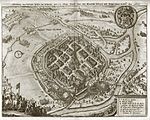Cathedral of St. Bartholomew, Plzeň
13th-century Roman Catholic church buildings in the Czech RepublicBuildings and structures in PlzeňChurches completed in 1295Churches in PlzeňGothic Revival church buildings in the Czech Republic ... and 3 more
National Cultural Monuments of the Czech RepublicRoman Catholic cathedrals in the Czech RepublicTourist attractions in the Plzeň Region

The Cathedral of St. Bartholomew (originally the Church of St. Bartholomew) is a Gothic church located on the Main Square in Plzeň, Czech Republic. It was probably established together with the city around the year 1295. The church became a cathedral in 1993, when the Plzeň diocese was created. It was designated a national cultural monument of the Czech Republic in 1995.
Excerpt from the Wikipedia article Cathedral of St. Bartholomew, Plzeň (License: CC BY-SA 3.0, Authors, Images).Cathedral of St. Bartholomew, Plzeň
náměstí Republiky, Pilsen Vnitřní Město
Geographical coordinates (GPS) Address External links Nearby Places Show on map
Geographical coordinates (GPS)
| Latitude | Longitude |
|---|---|
| N 49.7475 ° | E 13.3776 ° |
Address
svatý Bartoloměj
náměstí Republiky
301 37 Pilsen, Vnitřní Město
Southwest, Czechia
Open on Google Maps










